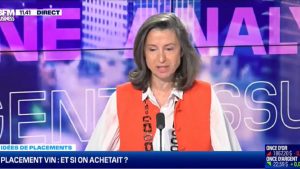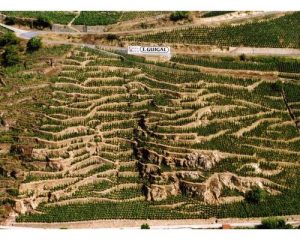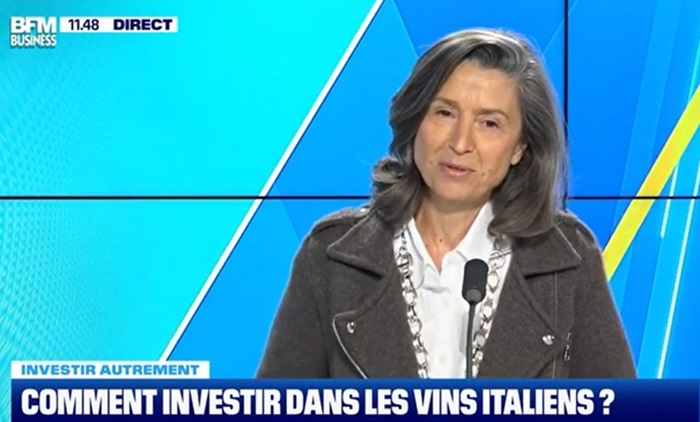
Angélique de Lencquesaing, interviewed on the French television channel, presents an overview of Italian fine wine, focusing on those from Piedmont.
Today we’re taking you to the north of Italy where Piedmont produces the dreamy wines: Barolo, Barbaresco… During the interview, Angélique answered the all-important question – is it worth investing in these wines?
Piedmont is a haven for white truffle which is closely linked to the gastronomy of the region, just like the vine is. Pollen from vines dating back to the 5th BCE have been found in the region. What is more, Pliny the Elder praised the qualities of this region’s wine in his writings during the 1st century CE.
If that weren’t enough, Piedmont’s slopes and viticultural landscapes have been named as an UNESCO world heritage site. Fine red wine is produced here from the Nebbiolo grape, a name linked to the Italian word “nebbia”, meaning fog, which covers the grapes as the harvest approaches. The climate in this region sandwiched between the Alps and the Apennines is cool in winter and hot and dry in summer. Nebbiolo wines are known for their delicate and silky nature which are not too dissimilar from Burgundy wines, which are highly praised by wine enthusiasts today.
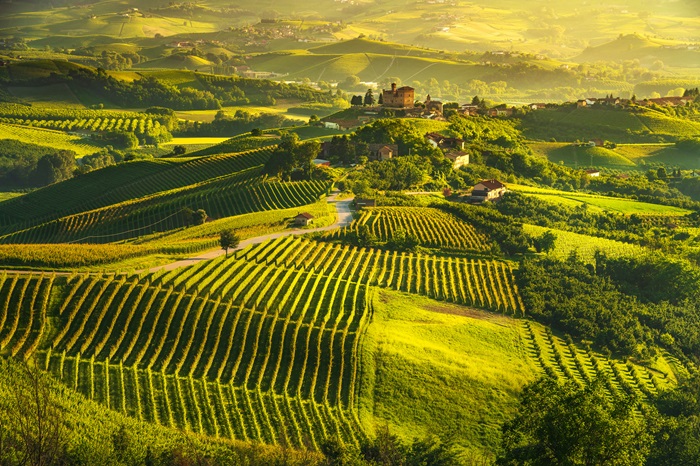
We will have a look at Piedmont’s place in Italian wine production and on the secondary market but first, a quick work on wine production in general. Italy has lost its title as the world’s leading wine producer, isn’t that so?
Yes, that’s true. Since 2007, Italy has been crowned the leading producer nearly each year with the exception of 2011, 2014 and now 2023. Last year was very wet there, alternating with periods of heatwaves. These are the perfect conditions for some diseases such as mildew, which heavily reduce the harvest, to develop. Its production dropped from 50 million hectolitres to 43 million, allowing France to take the title with its 46 million hectolitres.
Do Italian wines have a place at auctions and in wine enthusiasts’ collections?
Auction results mirror what the passionate wine enthusiasts are looking for. Following market trends can act as a guide for everyone, even those who are just entering the world of wine. And the amount of bottles from different regions present at auction offer good indications as to the share they should possess in a wine collection.
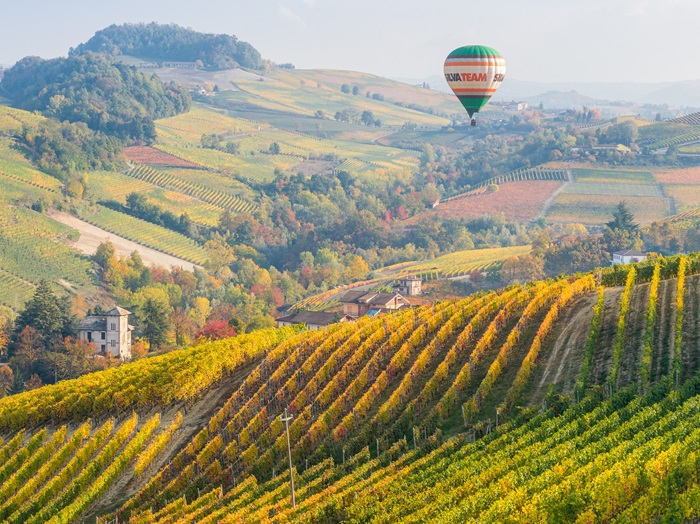
While iDealwine auctions heavily feature French wines, those from elsewhere in the world are also highly sought after by wine enthusiasts and we are seeing their share at auction grow. Of the wines produced in countries other than France, Italian wines represent 61% of the auctioned volumes. And their growth knows no bounds, increasing by 37.5% in comparison to 2022!
Where does Piedmont fit in?
Italian’s sixth largest wine region, Piedmont is home to the greatest number of DOCs (short for Denominazione di Origine Controllata, meaning “designation of controlled origin” in English). This region stands out thanks to its extremely talented producers, and it occupies a significant proportion of Italian wines at auction. Last year, 44% of Italian wine came from Piedmont and it brought home around half of their value (48%).
Is this due to the very high price of the wines?
Effectively, yes, as the region produce extremely high-quality wines. The average price of Piedmont wine at 2023 auctions stood slightly higher that the overall average of Italian wines at iDealwine auctions (€110 ahead of €100). It’s not much of a difference but out of the 20 best-selling Italian wines, 11 of them came from Piedmont with the most expensive one being a 1989 Barbaresco produced by Bruno Giacosa, obtaining €1,810.
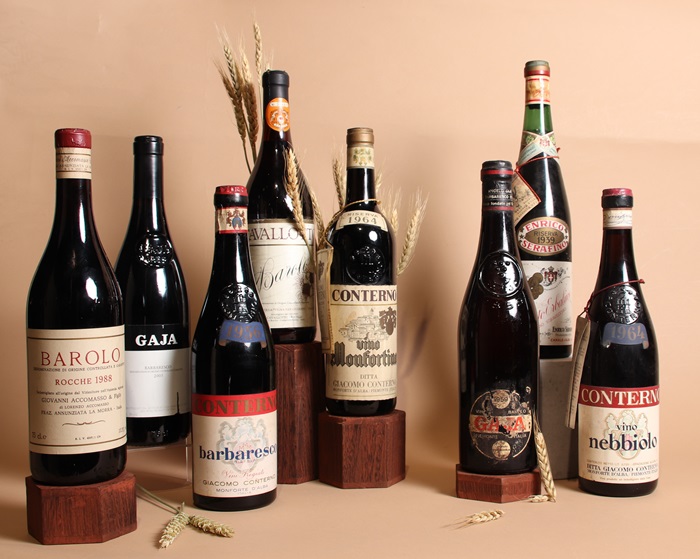
Barbaresco is another appellation in Piedmont if I follow you correctly?
Yes, but it is smaller (a little less than 700 hectares compared to Barolo’s 1700). Barbaresco produces nearly three times fewer bottles than Barolo, but both uses the same grape variety, Nebbiolo. Part of the appellation extends into the area of Alba, where truffles are aplenty. The wines, which are considered more delicate, are also extremely popular.
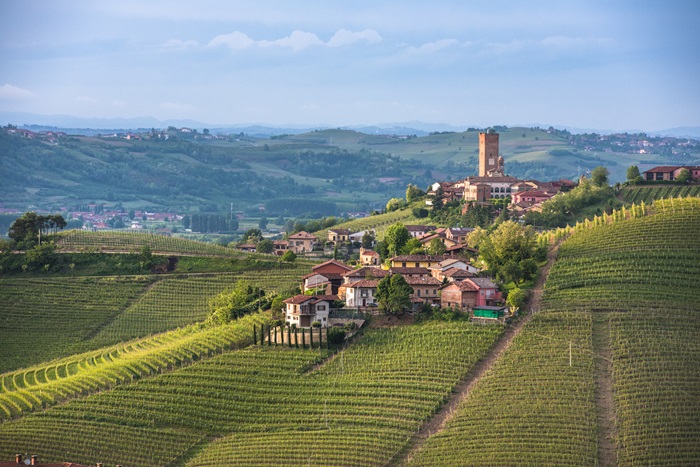
Talking about the style of wine, how would you describe wine from Piedmont?
Barolo, the most popular appellation in the region, is made in two different styles. There is the traditional style, for which the winemakers harvest the grapes late and make the wine in such a way that not too many tannins are extracted. The wines are aged in old barrels for five years or more which gives the tannins the time they need to soften. Once bottled, the wines sometimes spend several more months ageing before being released onto the market. Then there is the more modern style. This uses more thorough and rapid extraction to produce powerful wines that are also more rounded and can be enjoyed younger.
Can you give us a few examples?
For the traditionalist, Giacomo Conterno is a leading figure. His sons have since chosen two contrasting paths. Names like Mascarello, Burlotto, and Rinaldi also make traditional Barolo. Alternatively, winemakers such as Angelo Gaja use different vinification methods for a more modern style.
Which style is the “winner” according to auction results?
Wine enthusiasts went for the more traditional wines in 2023. iDealwine’s auction results are a testament to this as seven “classic” Barolos sit in the company’s list of the 20 highest-priced Italian bottles. Angelo Gaja represents the modern approach in this list with a Langhe wine from a collectable vintage – 1968. The bottle of Sori San Lorenzo went for more than €1,000 (€1002 to be exact). Roberto Voerzio is another representative of the newer style.
Coming back to vintages, you said that these wines can be aged for a very long time. Are wine enthusiasts prepared to wait?
This is exactly why the highest-priced wines are generally from older or very old vintages. Wine enthusiasts can buy the bottles at auction without having to wait the many years as the wines age. A Barolo Riserva Monfortino 1964 from the famous Giacomo Conterno – who is part of a revisited classicist movement – went under the hammer for €1,302 last year and was bought by a bidder in Hong-Kong. When looking at the highest-priced wines, the vast majority of them were produced before 2010.
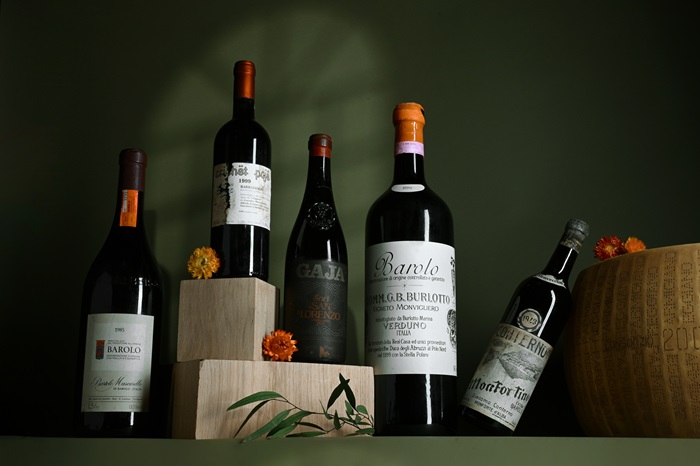
Can you also look for more recent vintages and allow them to age? What are the producers to look out for?
Yes, this poses a very interesting option. If you have a cellar that’s up to scratch with good levels of humidity and at the right temperature, there is no reason not to acquire these wines when they are young, at more accessible prices and allow them to age. I would cite both Luigi Pira and Giulia Negri who produce wines in a sustainable manner that go for around the €50 mark. It would be worth following them closely. Name like Vietti and Rinaldi are a bit more expensive, but they are also of excellent quality. Ceretto, Sottimano, and Luciano Sandrone are also good options. The beauty of these wines is that there is now a worldwide audience for them who are likely to bid on them at auction. If you don’t drink them, you’ll be making wine lovers in Europe, the United States and Asia very happy. An excellent investment option.
Shop all Italian wines for sale on iDealwine
Request an estimation of your wines

